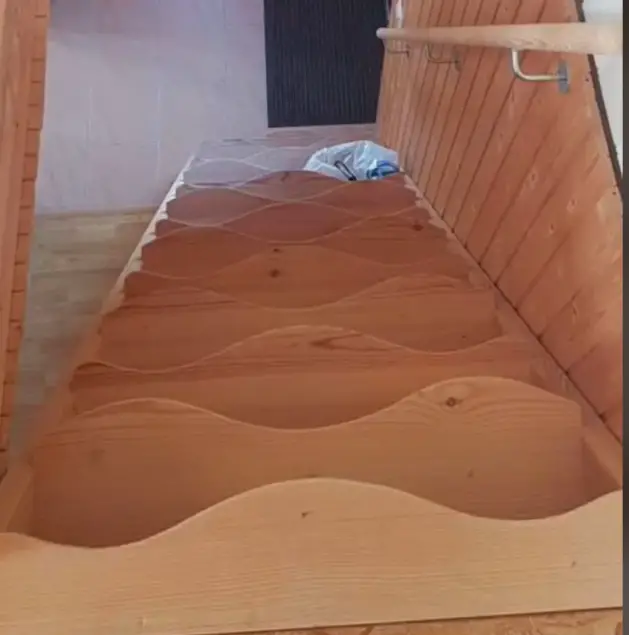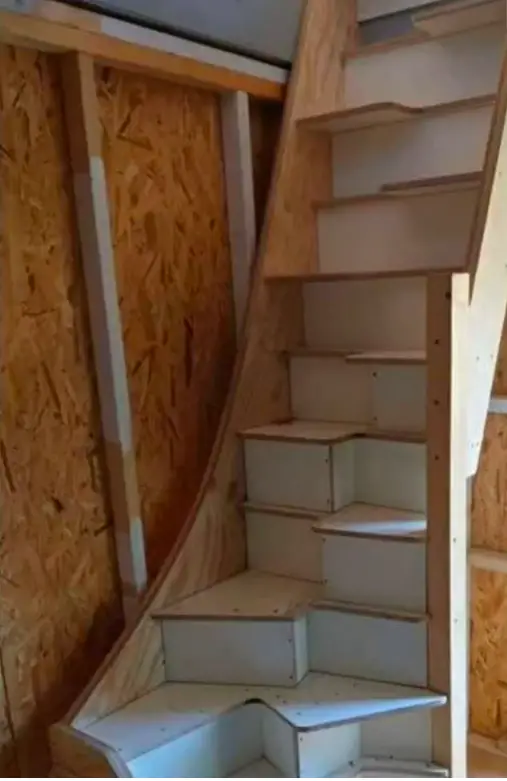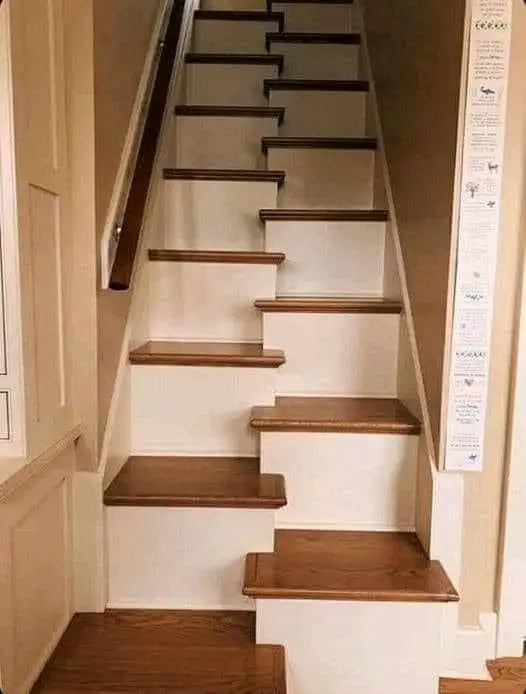Witches’ stairs, a unique and space-saving design feature, have been making waves on social media platforms like TikTok. But despite their intriguing name, these stairs have nothing to do with warding off witches. So, what’s the real story behind this quirky design element?
The origins of witches’ stairs, also known as alternate tread stairs, date back to the need for space-efficient solutions in homes with limited room. These stairs are typically found in attics, lofts, and tiny houses, where traditional staircases would take up too much valuable space.

So, how do witches’ stairs work? Each step is half as wide as traditional steps, and they’re staggered to save even more space. This design not only makes the staircase narrower but also provides additional storage space for books or decorative items.
Despite their unconventional design, witches’ stairs are safe and up to building codes in the United States. In fact, they’re often used in commercial settings, such as ships and oil rigs, where space is limited.
The real origins of witches’ stairs are attributed to J.M. Lapeyre, who patented a metal version of the design in 1985. Lapeyre envisioned the stairs as a safer alternative to ladders in tight spaces.
But where did the myth about witches’ stairs come from? The legend claims that these staircases were built into homes in Massachusetts during the Salem witch trials to ward off witches. However, there’s no historical evidence to support this claim.

In fact, experts like Robin Briggs have studied the historical literature and found no mention of stairs designed to disable witches. It seems that the myth about witches’ stairs is nothing more than a fun and quirky legend with no basis in fact.
So, the next time you come across witches’ stairs, remember that they’re not about warding off witches but about clever design and space efficiency. Whether you believe in the myth or not, witches’ stairs are undoubtedly a unique and decorative alternative to traditional staircases.


